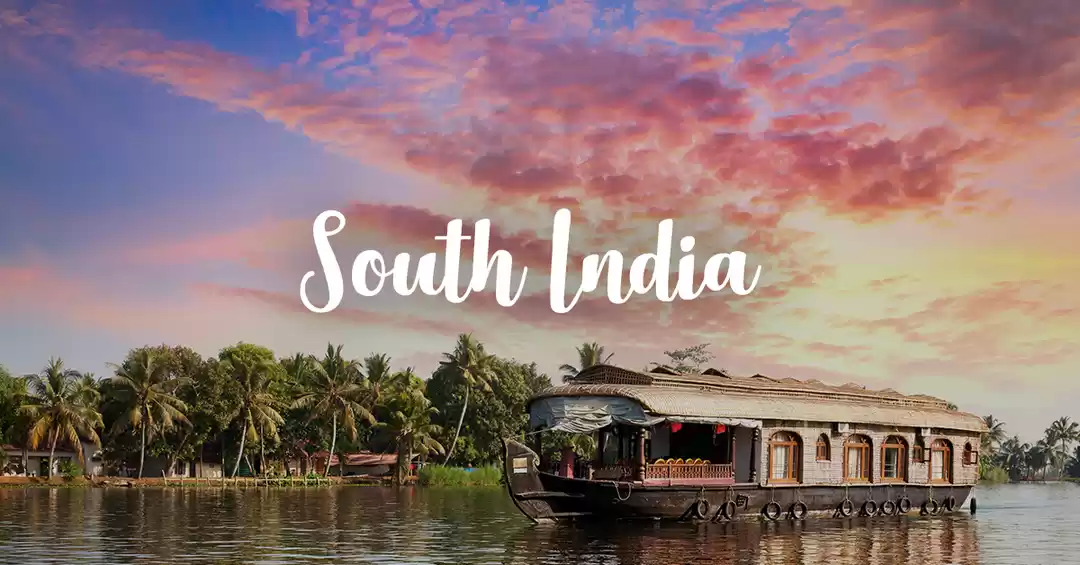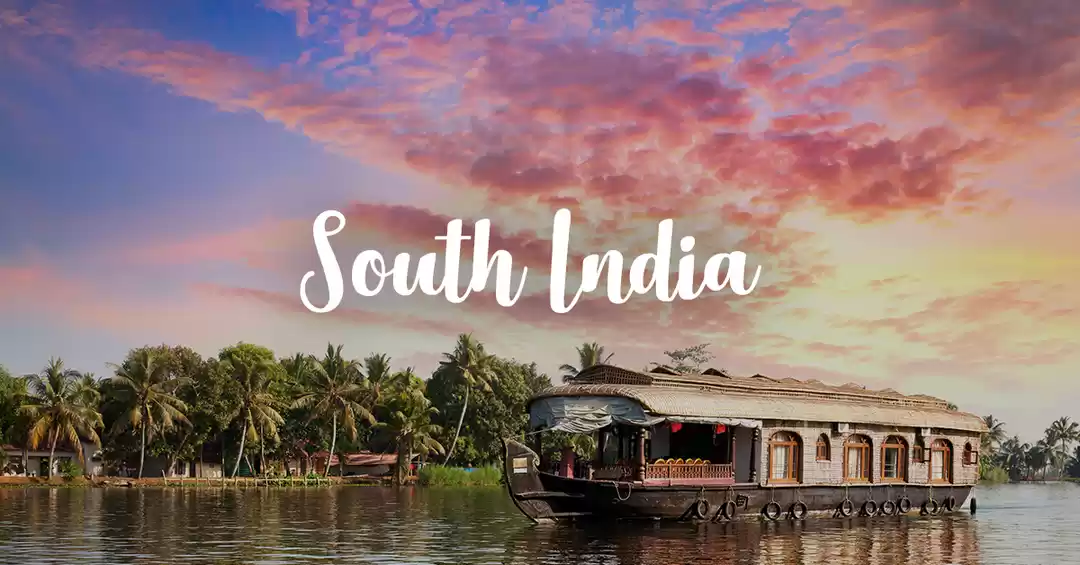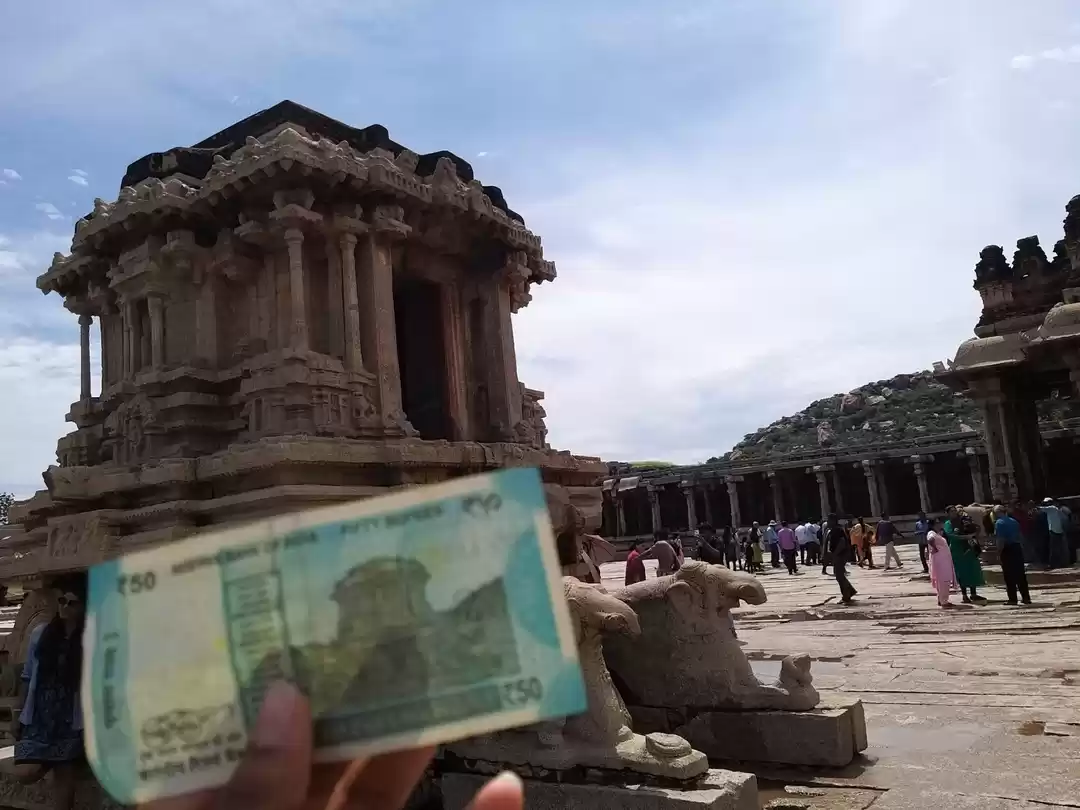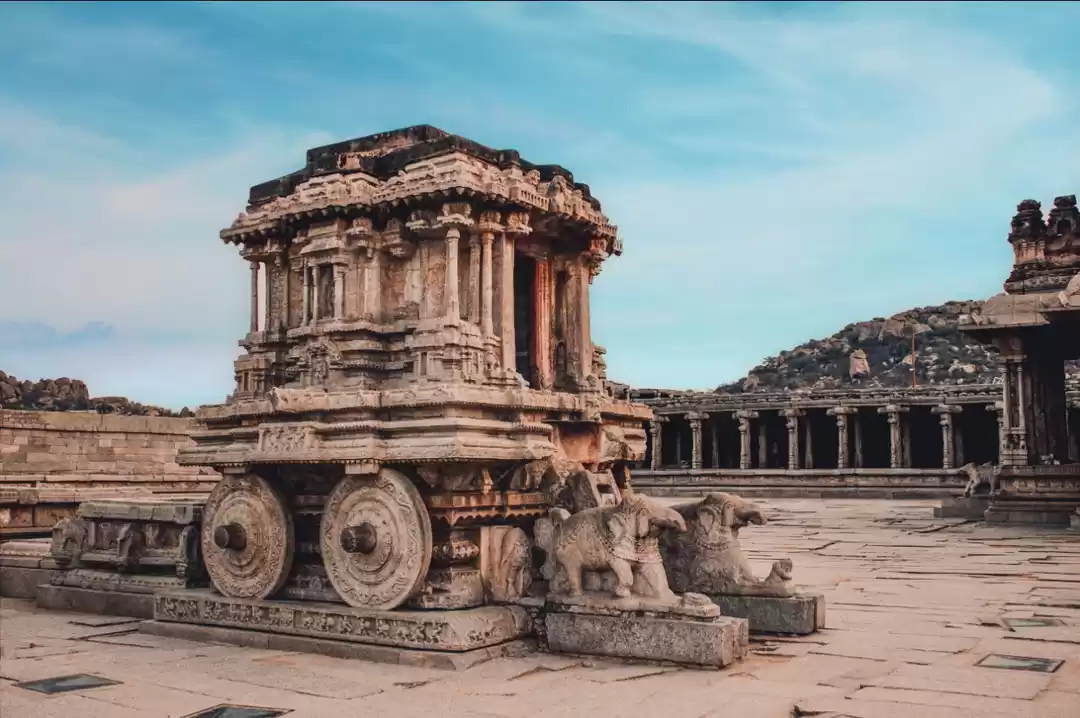
Hampi, the magical land of boulders and temples - this place had always intrigued me. I had wanted to visit this place for so long and finally when I was in Bangalore for some work, I squeezed in a weekend trip before heading back to Mumbai. I spent two full days in Hampi and pretty much covered everything to see there. However, you can spread the places over a couple of days more and make it a more leisurely trip. Here is a sample itinerary for anyone looking to make a weekend getaway to this beautiful place.
Getting to Hampi: The nearest railway station to Hampi is Hospet, which is about a half an hour drive away from Hampi. By road, Hampi is well connected to all major cities like Bangalore, Hyderabad, Goa etc.
I had taken a KSRTC bus (the government bus service in Karnataka) from Bangalore to Hampi. It is an overnight journey and the bus fare costs around 700-900 INR.
P.S. Most of the buses from Bangalore to Hampi, and vice versa run at night and reach the destination early morning. There are almost no buses that run during the day. So plan your trip accordingly.
I reached early morning in Hampi. You can feel the magic slowly unfolding as you reach Hampi, as things start getting beautiful along the road. The roads surrounded by paddy fields and banana plantations, occasionally lined up with coconut trees with the red bouldery hills in the background provide an amazing sight.


Now I had to keep my luggage and get fresh before heading out for exploring. I was couchsurfing in Hampi and the place was on the other side of the river - the Hippie island (not really an island). Usually there's a boat ride available to cross the river which takes about 10-15 min and costs around 10 INR per person. You can also take a coracle ride for about INR 50 per person. However, as the gates of the dam were opened around that time, the service was shut and I had to take a bus to go around which was about half an hour of a journey.
The Hippie side is endowed with more natural beauty. There are a few guest houses on this side where you can get a cheap accommodation. The place I was staying was nestled at the foots of a hill, well hidden from the road. After getting fresh, I left for exploring around - just taking a walk around the hills seeing where they'd take me.






It was a beautiful experience. We went on a trail in the nearby hills, occasionally trying to climb on some boulders, succeeding a few times. The view from the top of the boulders was amazing. The red bouldery hills and the green banana plantations below made for a beautiful contrast.
After spending some time on the boulders, we headed downwards for lunch. I had hired a scooter on rent to roam around for 250 INR a day. There are some cafes near the broken bridge which provide decent food. Please note there are no fancy cafes in this part of Hampi, so keep the food expectations accordingly.
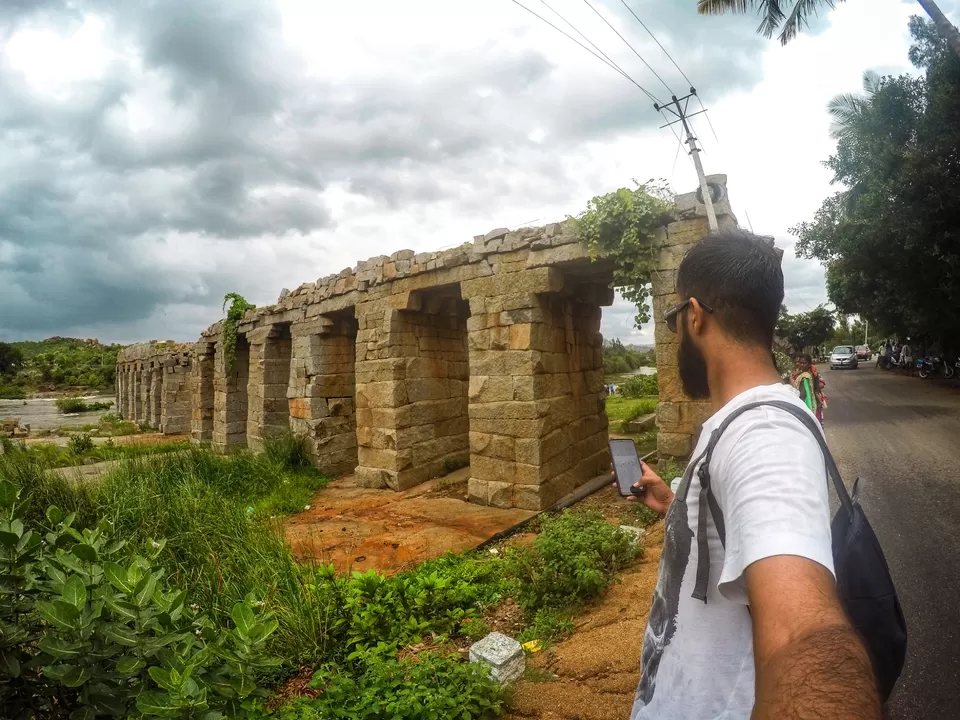
After a hearty homecooked meal at the Benjamin Cafe, we headed towards the Sanapur lake which was about a 3 km drive from the broken bridge. The lake is a reservoir formed by the dam on the Tungabhadra river. Surrounded by huge boulders on all sides, the lake offers a calming presence and a picturesque sight. You cannot help but wonder how some of the structures could have been naturally formed. There are coracle boat rides available at the lake as well.
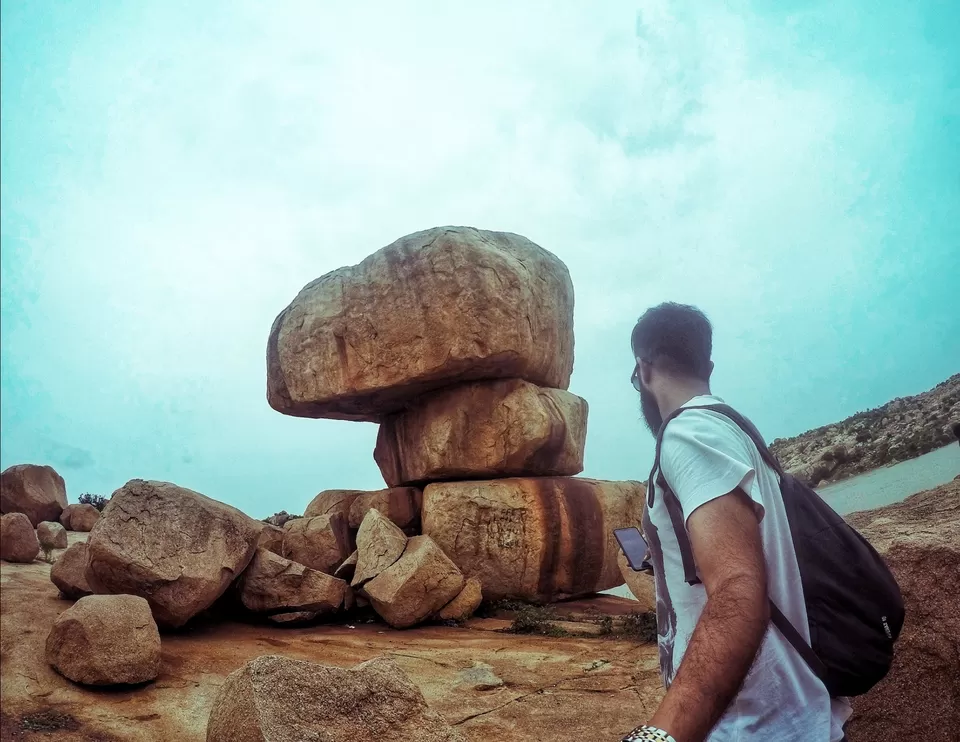

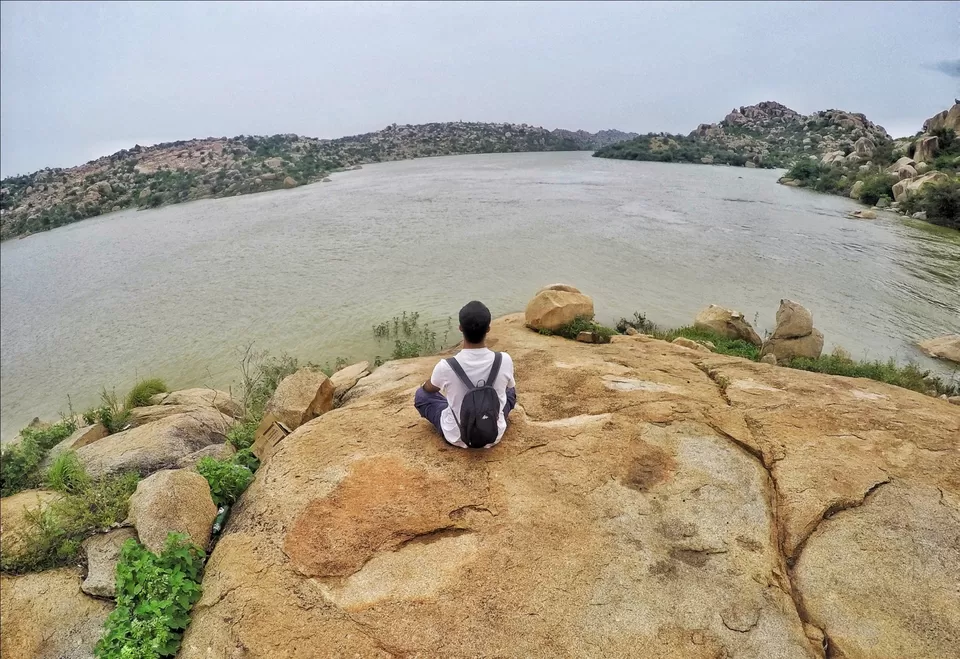
The afternoon was beautifully spent at the Sanapur lake. After getting back and having some refreshments, we decided to visit the Anjaneya Temple to watch the sunset. The Anjaneya hill in Hampi is believed to be the birthplace of Lord Hanuman and at the top of the hill, is a temple dedicated to him. Also known as the Monkey temple, it is a highly important place for the devotees of Lord Hanuman. It is a climb of about 600 steps but is worth all the efforts once you reach the top. It offers a 360 degree panaromic view of entire Hampi, which is simply amazing and also makes for a great sunset viewing point.




After witnessing one of the best sunsets ever, we headed back down to our place where we all couchsurfers had a small party to end the day.
The next day, I got up early as I had to cover the other side of Hampi - the one full of ancient ruins and relics.
The boat service was still shut. Also, for some weird reason, you are not allowed to take the scooters from one side of Hampi to the other side. So I took a bus from Anegundi that dropped me to the main side of Hampi. Here, you can either rent a bike or a bicycle to roam around, or hire a rickshaw for an entire day that will show you around. Since I had luggage with me, I opted to hire a rickshaw which cost me around 700 INR after some bargaining. The best part was since I had hired it for a day, I could still explore different places at my own pace.
First, we went to the Krishna temple, which was built by the king Krishnadevraya in 1513 AD to celebrate the conquest of the eastern kingdom of udayagiri or Utkala (present day Orissa). This is one of the temples that have remained fairly intact over the years and is full of epic stories of the Vijaynagara era carved on the temple walls. Also, opposite the temple, are the ruins of the traders' market.


Next we went to the Lakshmi Narasimha statue and Badavalinga temple. Both are situated adjacent to each other. Hampi is full of all these monolithic sculptures wherever you go. The Lakshmi Narasimha statue is the largest and the most imposing of them all. It is just amazing how such a detailed sculpture was made out of a single block of stone. The original sculpture had a small figure of Goddess Lakshmi sitting on the lap of Narasimha. However, the statue was vandalized during a Mughal raid and its limbs were broken and the figure of Lakshmi was separated from that of Narasimha. Now the damaged statue of Lakshmi resides at the Archaeological Museum at Kamalapura.


The Badavalinga Temple has the largest monolithic Shiva Linga in Hampi. The Linga is made of black stone and is about 3 metres in height. An interesting thing about the architecture of the temple is that the chamber has no ceiling. During the day time, sunlight enters through the opening in the ceiling and floods the Shiva Linga with light.
Next, we went to the Zenana Enclosure, which was a complex meant to provide privacy to the royal women. The major attractions here are the Lotus Mahal, a beautifully symmetrical palace, the basement of Queen's palace and the Elephant stables right outside the enclosure, which were used to provide shelter to the royal elephants.

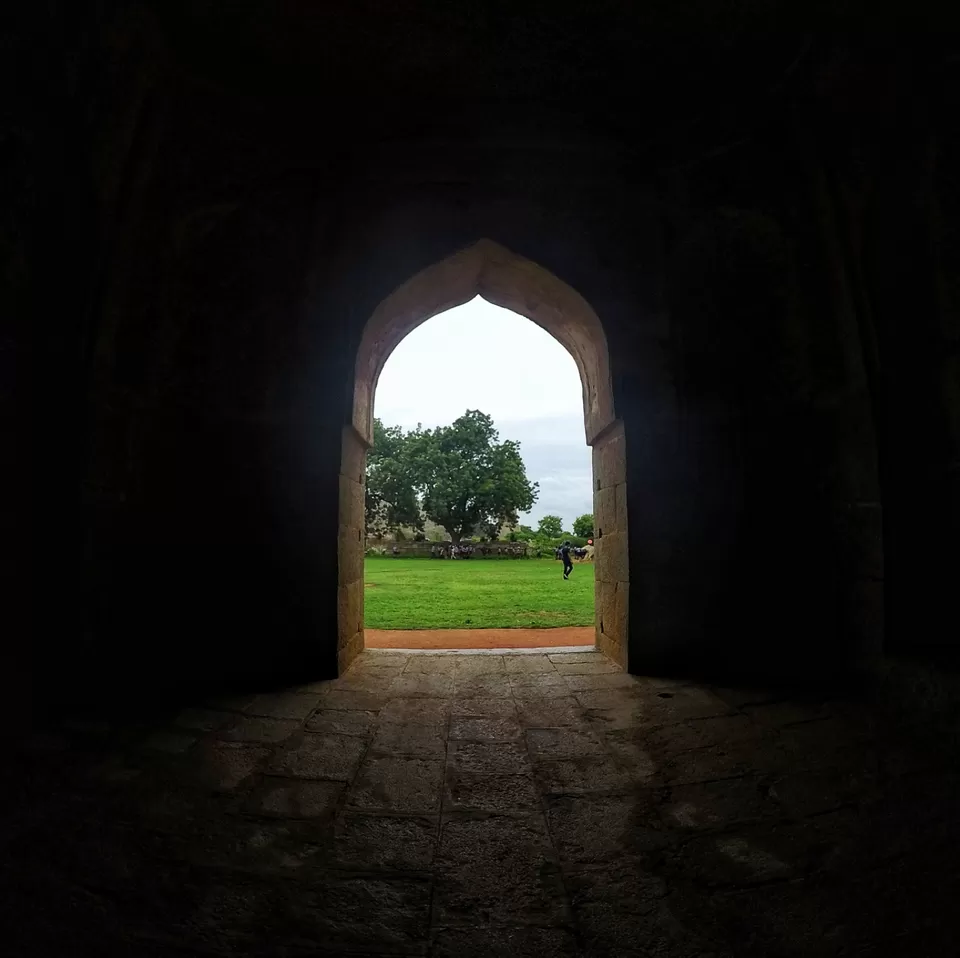
After the Zenana Enclosure, we went to the Royal Enclosure, another complex with significant royal buildings. Just outside the Royal Enclosure is the Queen's Bath, another example of architectural excellence of those times. Hampi has an ostentatious network of aqueducts and canals that were built to provide water to the buildings, tanks, baths and temples during the ancient days. The Queen's Bath is also connected to an aqueduct for fresh water supply.

The Royal Enclosure has some really beautiful structures inside. One of the most prominent among them is the Mahanavami Dibba - or the great platform where Dussehra celebrations were conducted. There is also a King's Darbar or audience hall and an underground chamber for shelter during an enemy attack. Another beautiful structure here is the stepped well. The symmetry and design of the place is simply amazing and makes for some great pictures.


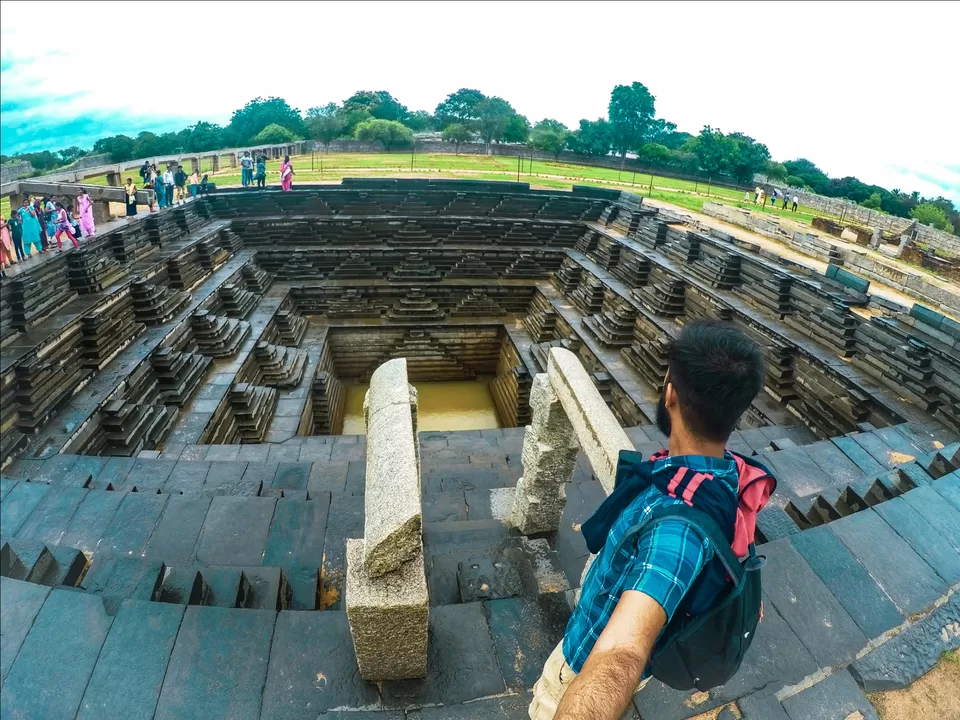
After the Royal Enclosure, now it was time for perhaps the largest and the most famous structures in Hampi - the Vittala temple. The temple complex is a sprawling area surrounded by high walls and towering gateways. It has many halls, shrines and pavilions inside it, each structure a beauty in itself. The most amazing of the structures are the stone chariot and the musical pillars. There are also the ruins of another large market in the temple complex.



While returning back from the Vitthala temple complex, we stopped at a few other standalone structures. One such structure was the Sasivekalu Ganesha temple. The temple has a huge statue of Lord Ganesha, carved out of a single block of rock, and is about 8 feet (2.5 metres) tall. The inscription on the statue is as old as 1500 AD and says it was erected in memory of the King Narasimha II, of the Vijaynagar Empire.

A short trek away from the temple is the Matanga hill which is another great spot for viewing sunset. Unfortunately I had to skip it due to lack of time. However, I would highly suggest visiting the place from the pictures I saw in my fellow couchsurfers' phones.
Lastly, I visited the Virupaksha temple which is right opposite the main bus stop and is the largest temple in Hampi. It is dedicated to Lord Shiva, as the consort of the local goddess Pampa who is associated with the Tungabhadra river. It was built around 1300 years back and amongst all the surrounding ruins, this temple is intact. It is believed that the temple has been functioning uninterruptedly ever since its inception in the 7th century AD. That makes this one of the oldest functioning temples in India.



After having dinner, I had a bus back for Bangalore in the evening which dropped me there early morning and the ticket cost me around 700 INR. So that was it - a perfect weekend getaway to Hampi where I could spend two entire days and still be back in time to resume work on Monday. However, you can always stretch the trip over a couple of days more. Also, there are about 150-200 temples and ruins in Hampi, so any amount of time is really less to cover it all. I would love to visit again for a longer duration soon though, exploring more places and enjoy a little more of bouldering. ;)
PRO TIP: It actually holds true for any place, but especially when in Hampi, do not get into any auto-rickshaws without confirming the fare beforehand, otherwise they charge you exorbitantly once you get down. Also, put your bargaining skills to good use as the rickshaw drivers almost always tell you a very high price at first.





